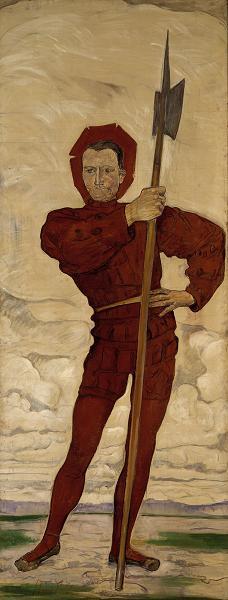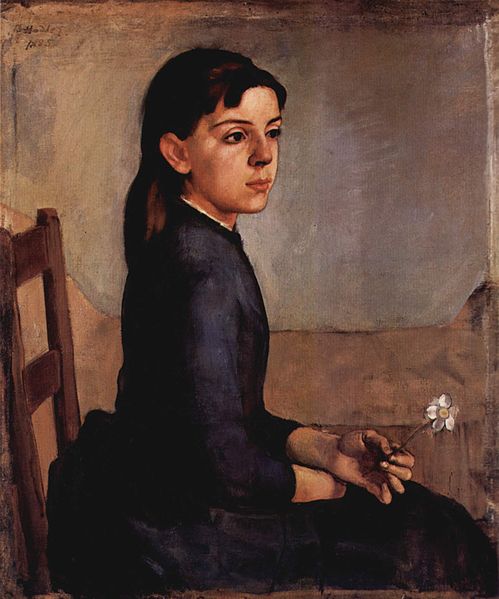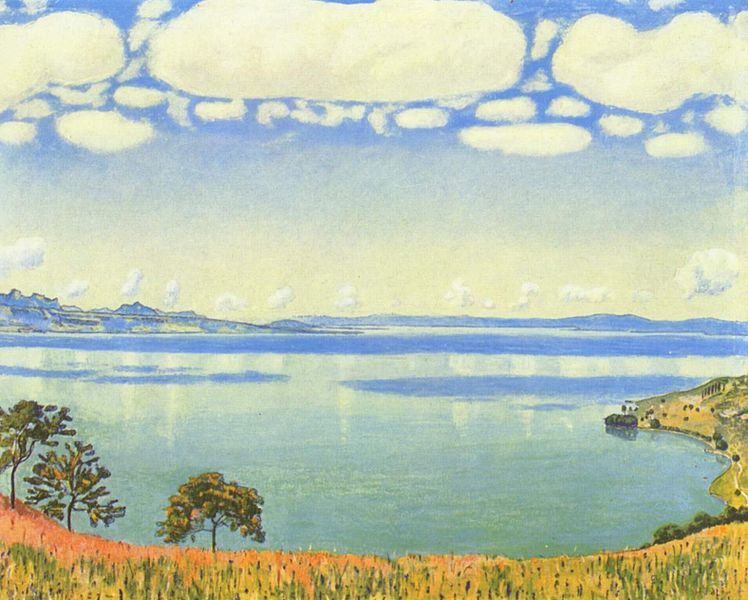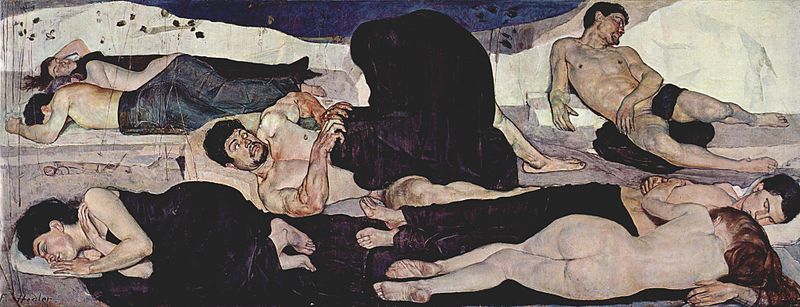<Back to Index>
- Painter Hugo Joseph Anton von Habermann, 1849
- Painter Ferdinand Hodler, 1853
PAGE SPONSOR
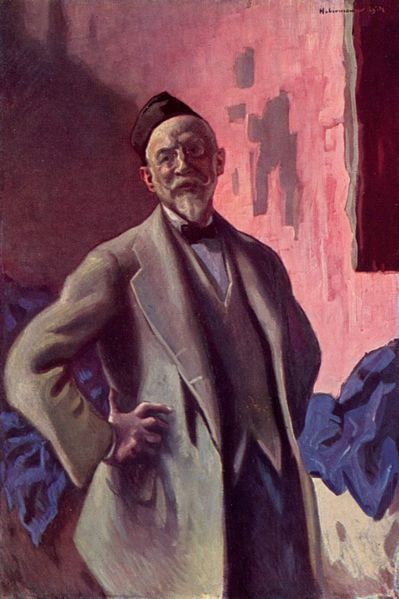
Hugo Joseph Anton Freiherr von Habermann (June 14, 1849 in Dillingen - February 27, 1929 in Munich, differs from Hugo von Habermann, his nephew and also a painter, 1899 - 1981) was a German painter and draftsman. He was especially known through figurative works and as a portrait painter.
He was the son of Captain Philip Freiherr von Habermann and his wife Pauline, née Countess of Leutrum Ertingen, born in Dillingen on the Danube. In 1858 he moved with his family to Munich and visited the Louis high school. In 1862 he became a student of the prestigious school of the city, the Wilhelm Gymnasium, and took drawing and painting lessons. He began his law studies in 1868, but studied with little enthusiasm. His interest was in painting.
In 1870 he was an officer during the Franco - German war in France. In the same year he executed his first painting "Reading Ruth and Boaz ears" . In Ingolstadt in 1871 as he was a manager for artists, made the decision to give up his law studies and become a painter.
When he returned to Munich, he took lessons from Herrmann and Schneider on 30 November 1871, in the Academy of Fine Arts. In 1874 he became a student in the master class of the Director of the Academy, history painter Karl Theodor von Piloty. He joined the Munich Artists' Association in 1878 where he presented for the first time his paintings. He finished his studies in 1879 and he moved in close proximity to the studio of the painter Bruno Piglhein in the 28th street boulder
Together with Piglhein and Bruno and Fritz von Uhde in 1880 they opened a private school of painting. This had to be closed because of lack of students. That same year he joined the Artists' Association. At an exhibition with the painting of "a problem child" , the art world took notice of him. For this he received a gold medal.
At the International Art Exhibition in Munich in 1897, he was awarded the title of Professor by Luitpold of Bavaria in recognition of the portrait of "Salome" .
In 1928, he moved back to his studio. He became ill and left the house only rarely.
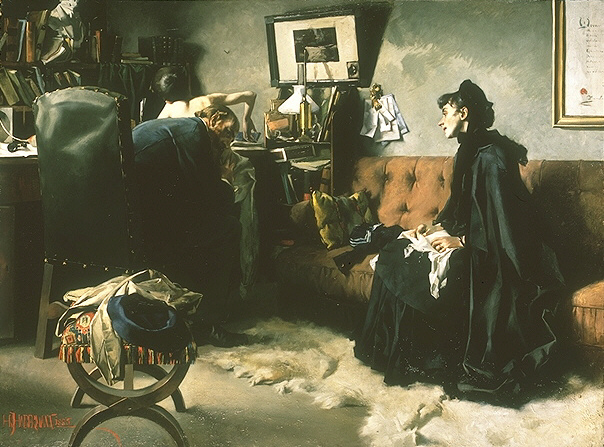
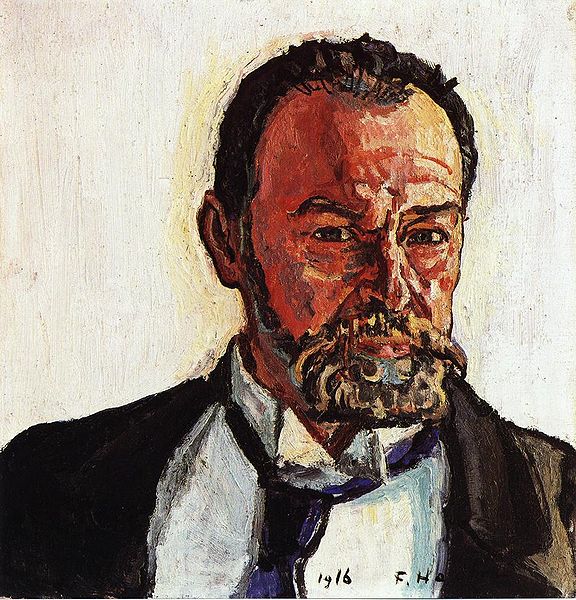
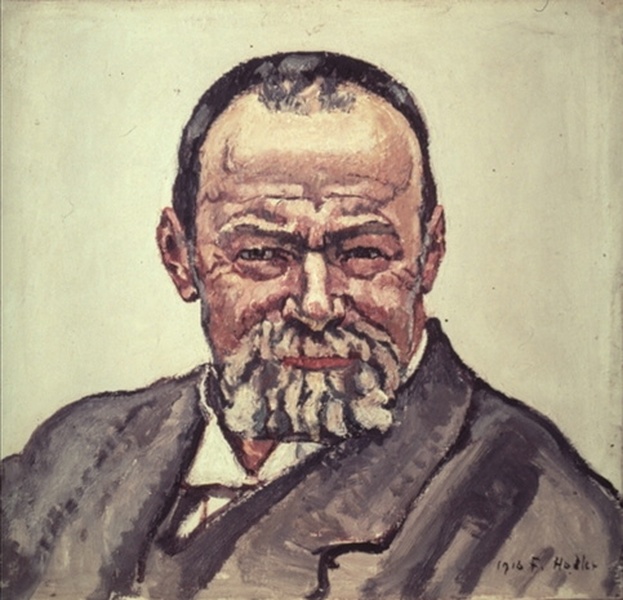
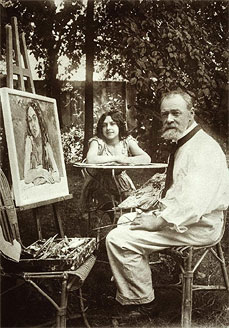
Ferdinand Hodler (March 14, 1853 – May 19, 1918) was one of the best known Swiss painters of the 19th century.
Hodler was born in Berne, the eldest of six children. His father, Jean Hodler, made a meager living as a carpenter; his mother, Marguerite (née Neukomm), was from a peasant family. By the time Hodler was eight years old, he had lost his father and two younger brothers to tuberculosis. His mother remarried to a decorative painter, but in 1867 she too died of tuberculosis. Eventually the disease killed all of Hodler's remaining siblings, instilling in the artist a powerful consciousness of mortality.
Before he was ten, Hodler received training in decorative painting from his stepfather, and was subsequently sent to Thun to apprentice with a local painter, Ferdinand Sommer. Hodler's earliest works were conventional landscapes, which he sold in shops and to tourists. In 1871, at the age of 18, he traveled on foot to Geneva to start a career as a painter.
The works of Hodler's early maturity consisted of landscapes, figure compositions and portraits, treated with a vigorous realism. He made a trip to Basel in 1875, where he studied the paintings of Hans Holbein — especially Dead Christ in the Tomb, which influenced Hodler's many treatments of the theme of death. In the last decade of the 19th century his work evolved to combine influences from several genres including symbolism and art nouveau. He developed a style which he called Parallelism, characterized by groupings of figures symmetrically arranged in poses suggesting ritual or dance.
In 1884, Hodler met Augustine Dupin (1852 – 1909), who became his companion and model for the next several years. Their son, Hector Hodler, was born in 1887, and founded the World Esperanto Association in 1908. From 1889 until their divorce in 1891, Hodler was married to Bertha Stucki, who he depicted in the painting Poetry (1897, Museum für Gestaltung, Zürich).
Hodler's work in his final phase took on an expressionist aspect with strongly colored and geometrical figures. Landscapes were pared down to essentials, sometimes consisting of a jagged wedge of land between water and sky. However, the most famous of Hodler's paintings portray scenes in which characters are engaged in everyday activities, such as the famous woodcutter (Der Holzfäller, Musée d'Orsay, Paris). This picture went on to appear on the back of the 50 Swiss Franc bank note issued by the Swiss National Bank.
In 1898, Hodler married Berthe Jacques. In 1914 he condemned the German atrocities conducted using artillery at Rheims. In retaliation for this, German art museums excluded Hodler's work.
In 1908, he met Valentine Godé - Darel, who became his mistress. She was diagnosed with cancer in 1913, and the many hours Hodler spent by her bedside resulted in a remarkable series of paintings documenting her disintegration. Her death in January 1915 affected Hodler greatly. He occupied himself with work; a series of about 20 introspective self portraits date from 1916. By late 1917 his declining health led him to thoughts of suicide. He died on May 19, 1918 in Geneva leaving behind a number of unfinished works portraying the city.
